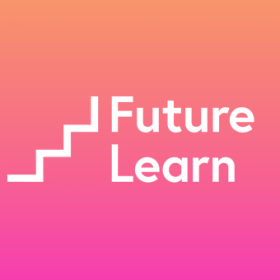Bob Cratchitt…retired was performed at Ormskirk Civic Hall in December 2015. It was written by the very talented Eric  Midwinter, one of the founder members of the U3A in Britain.
Midwinter, one of the founder members of the U3A in Britain.
It’s a sequel to Charles Dickens’ A Christmas Carol. Tony Crimlisk wrote the music, John Hardiker directed and Gaynor Hale was our choreographer.
We thank you for all your usual support for this very special show and hope it got you in a festive mood just in time for Christmas!

Some of the cast getting into the Christmas spirit!
Here are 2 reviews starting with a letter from Eric Midwinter, the author:
What a fascinating and glorious occasion! Although I’m supposed to be a wordsmith, I’m struggling to express how much it meant to me to see ‘Bob’ spring to life with such energy, pace, colour, laughter, dazzling effects, theatrical pictures, superb costuming, enthralling music, well-executed, rounded and adeptly comprehended characterisation…, to quote ‘The King and I’, et cetera, et cetera, et cetera. Knowing you are meeting up on Monday, would you please convey to everyone involved a most genuinely felt and affectionate vote of appreciation from the author.
My head is full of images, sounds and sights which keep rolling around and then turning up again…I think I can also add that the ‘top brass’ from the national U3A were seriously impressed; even by the interval they were overwhelmed by the sheer wonder of it all – ‘I have seen a lot worse in the West End’, said the current chairman; ‘I always knew it would be marvellous’ said the immediate past chairman, who has shown a keen interest in ‘Bob’ ever since I told her of his forthcoming existence. Such positive reactions – and well-merited
Thank you doesn’t cover it – but ‘thank you’. I hope to see you and, who knows, collaborate with you all again in the future.
And next, Jenny Robson wrote in the Champion newspaper:
Known for pulling out all the stops to create original productions this society’s latest effort is no exception.
With the script and lyrics written by Eric Midwinter and music by the society’s own Tony Crimlisk it is an upbeat story of Bob Cratchitt as he approaches retirement age.
A giant Christmas cracker opens the show through which is seen the interior of Scrooge’s and Marley’s shop (where nothing is ever knowingly undersold) with the Company looking festive in a flurry of red costumes with white faux (I hope!) fur.
It is Bob’s 65th birthday and, after 50 years of working in the store, the staff are holding a party to send him on his way clutching a gold clock.
Jane Morley (Dorothy Prothero) has been married to Jacob Marley and is now holding a torch for Ebenezer (Tony Adamson).
David Davies takes the eponymous role with Maureen Morris as his wife, Martha.
‘Tiny Tim’ (Colin Ratcliff) has grown up and is cured of his Dickensian impediment. He’s now a wealthy banker who lives in a 27-roomed mansion. Playing his snobby wife, Theresa, is Gill O’Flaherty who takes the comic role very well. It has been good to watch her progress over the past few years from choreographer and dancer to comedy actress.
The three inevitable ghosts (who ‘like to sing in chorus’) – Ghosts of Retirement Past (Bill Edwards), Present (Teresa Edwards) and Yet to Come (Sue Hardiker) arrive to convey the message that retirement does not have to be boring when the fabulous University of the Third Age is prominent.
The good pace of the show owes thanks to John Hardiker’s expert direction and Gaynor Hale’s clever choreography together with the vivacity of the cast, seasonal costumes and stunning scenery. Congratulations to the whole team!
Score: 8/10 – Very enjoyable!
A big THANK YOU to everyone who supports our productions; our group work very hard for many months to put them on stage and it’s very encouraging to know we can depend on you after all our efforts.





























 The 2016 programme of bird group meetings began on 19 January with Steve Halliwell’s excellent talk ‘St Kilda the lonely Isle’, based on 4 visits to the group of islands which have double World Heritage Site status.
The 2016 programme of bird group meetings began on 19 January with Steve Halliwell’s excellent talk ‘St Kilda the lonely Isle’, based on 4 visits to the group of islands which have double World Heritage Site status.


















 Consultant Obstetrician and Gynaecologist at Whiston Hospital. Graham came along to tell us about breeding, egg laying, incubation, feeding, nurturing and fledging in birds. Many of these things vary greatly from one species to another, and there seems to be an almost limitless number of combinations, each designed to ensure the continuity of that species in its niche environment.
Consultant Obstetrician and Gynaecologist at Whiston Hospital. Graham came along to tell us about breeding, egg laying, incubation, feeding, nurturing and fledging in birds. Many of these things vary greatly from one species to another, and there seems to be an almost limitless number of combinations, each designed to ensure the continuity of that species in its niche environment.